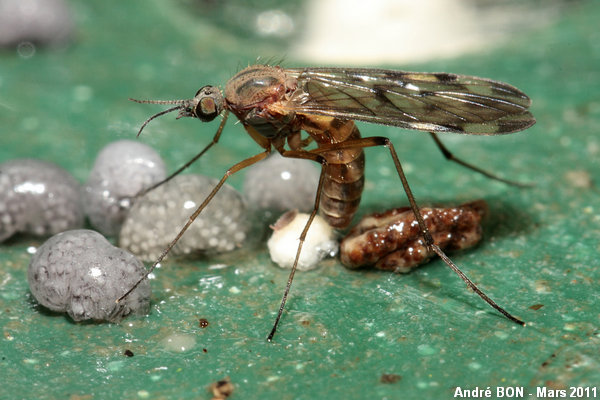
| Window Gnat (Sylvicola fenestralis (Scopoli, 1763)) |

|
|
Scientific name: Sylvicola fenestralis (Scopoli, 1763) Common name: Window Gnat French name: Sylvicole des fenêtres Order: Diptera Family: Anisopodidae Wingspan : 6-10 mm (4.5 to 5.5 mm for the body). Biotope: The larvae grow in rotting vegetation. Window Gnats are attracted to light and come to windows. This is the origin of their scientific and common names. Geographic area: Europe Observation period : All year round. |
The Window Gnat has a reddish brown body. The thorax, which is covered by some long yellow hairs, shows three black longitudinal stripes. The one in the centre, a little shorter, has a pointed tip at the rear. The wings are patterned with dark spots. The pterostigma is yellow in the centre and bordered with brown on each side. M1 and M2 veins run separately from the discal cell. The wing tip shows a rather long dark patch. The legs are yellowish. The median and the hind legs show black rings. The tergites on the upper side of the abdomen are pale brown with black bars on the fore edge. The sternites are bordered with bright yellow on the hind edge. There are several similar species including Sylvicola punctatus and Sylvicola fuscatus whose wing tip has no dark patch. I have read that it is impossible to tell Sylvicola fenestralis and Sylvicola cinctus apart without a close examination of the genitalia. (There are also Sylvicola baechlii and Sylvicola zetterstedti species which must be difficult to tell apart from the two previous species). |
| [To know more about the Window Gnat] [Top] |

|
I have found this Window Gnat under the cover of my compost heap. Of course there is still a doubt between the Sylvicola fenestralis species and the Sylvicola cinctus species and maybe between other members of the genus which are still unknown to me. That why I need to indicate Sylvicola sp… |